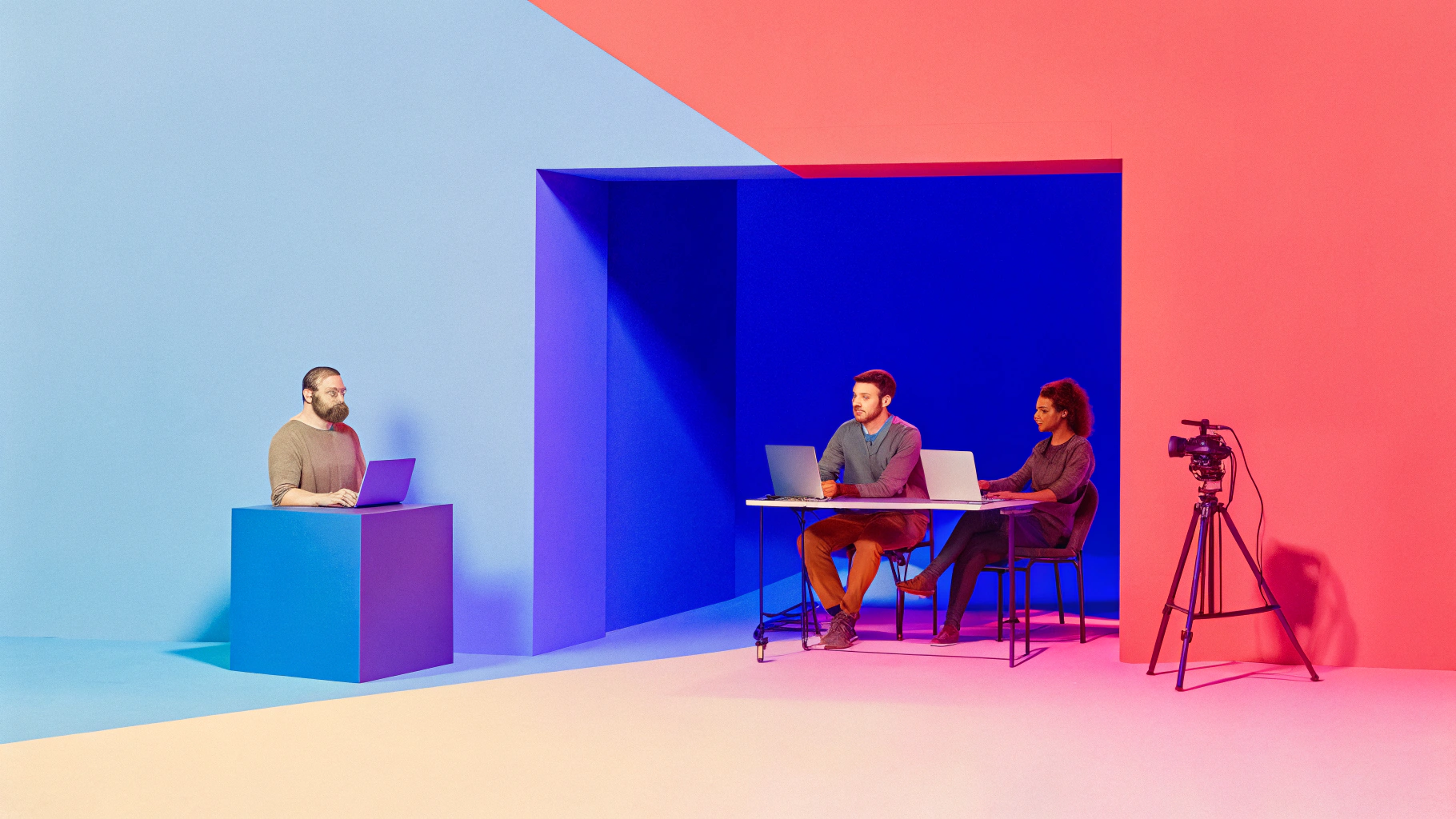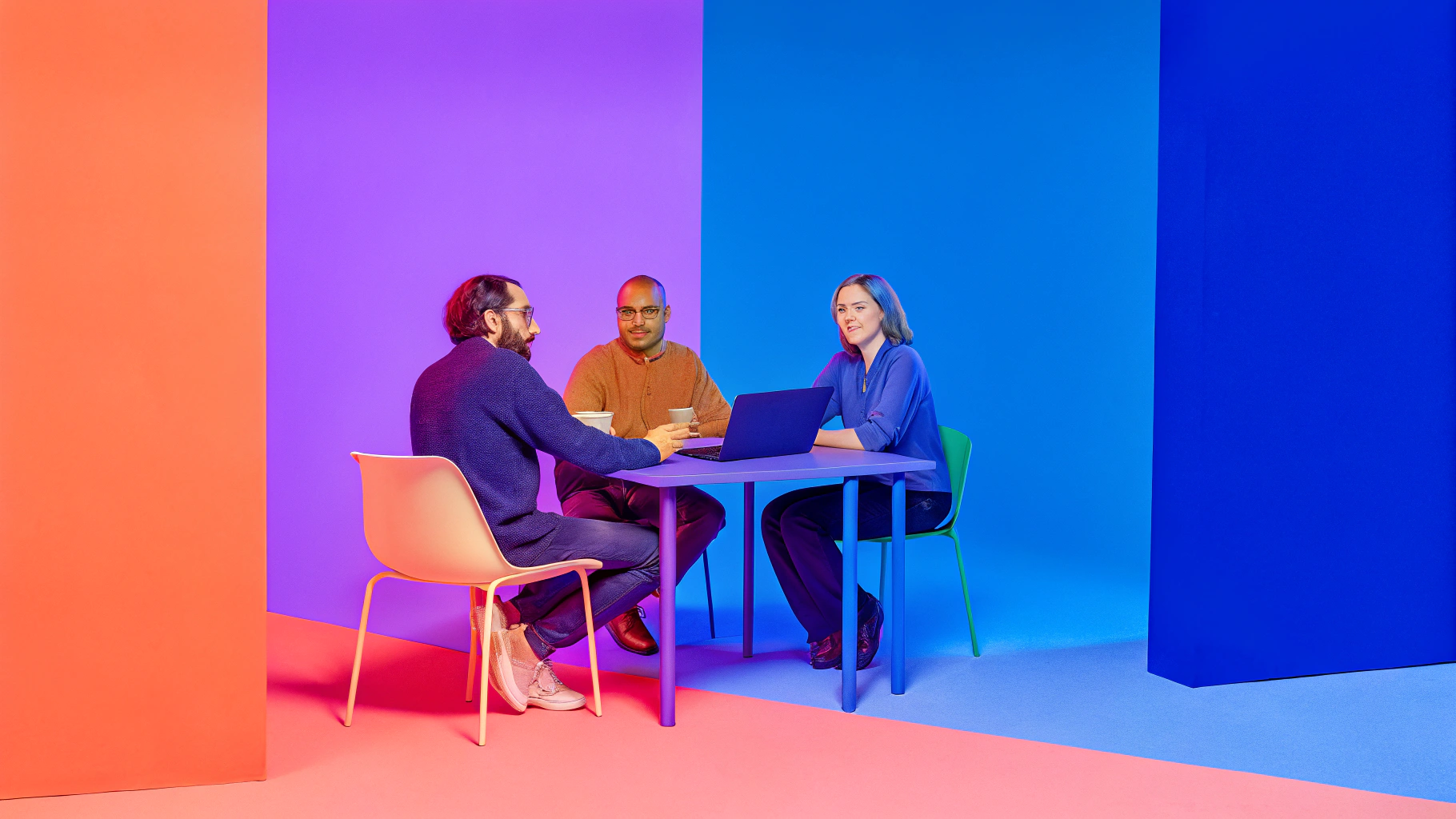
Social media videography has evolved from a nice-to-have into an absolute necessity for brands looking to cut through the digital noise in 2025. With video content generating 1200% more shares than text and images combined, understanding the nuances of social media video production isn't just beneficial, it's critical for your brand's survival.
At MediaNug, we've witnessed firsthand how strategic video content transforms brand visibility and engagement. This comprehensive guide will walk you through everything you need to know about social media videography, from technical specifications to trending formats that are dominating feeds across America.
What is Social Media Videography?
Social media videography is the specialized art of creating video content specifically designed for social media platforms. Unlike traditional videography, this discipline requires understanding platform-specific algorithms, user behavior patterns, and the unique viewing habits of mobile-first audiences.
The key difference lies in the approach: while traditional video production focuses on longer-form storytelling, social media videography emphasizes quick engagement, vertical formats, and bite-sized content that stops the scroll. It's about creating thumb-stopping content that delivers your message within the first three seconds.

Platform-Specific Video Requirements and Best Practices
Instagram Video Specifications
Instagram offers multiple video formats, each serving different purposes in your content strategy:
Instagram Reels remain the platform's golden child, with the algorithm heavily favoring this format. Optimal specifications include 1080x1920 pixels (9:16 aspect ratio), a maximum 90 seconds duration, and frame rates between 23-60 fps. The sweet spot for engagement lies in 15-30 second videos that deliver immediate value.
Instagram Stories provide an intimate connection with your audience. Use 1080x1920 pixels, keep videos under 15 seconds per story, and leverage interactive elements like polls and questions to boost engagement rates.
IGTV and Feed Videos support longer content but require hook-heavy introductions. Square (1:1) or vertical formats perform better than landscape, with captions becoming increasingly crucial as 85% of videos are watched without sound.
TikTok Video Production
TikTok has revolutionized short-form content, making it the fastest-growing platform among US users aged 18-34. The platform thrives on authenticity over polish, but technical excellence still matters.
Optimal TikTok specifications include 1080x1920 pixels, 15-60 seconds duration (though 15-30 seconds perform best), and MP4 format with AAC audio. The platform's powerful algorithm rewards content that generates immediate engagement, making the first 3 seconds absolutely critical.
YouTube Shorts Strategy
YouTube Shorts competes directly with TikTok, offering creators access to YouTube's massive search capabilities. Use 1080x1920 pixels, maximum 60 seconds, and focus on educational or entertaining content that encourages subscriptions.
The key advantage of YouTube Shorts lies in discoverability through search, making keyword optimization in titles and descriptions more important than other platforms.
LinkedIn Video Content
Professional video content on LinkedIn requires a more polished approach while maintaining authenticity. Square (1:1) or landscape (16:9) formats work well, with 30-90 seconds being the optimal length for maximum engagement.
LinkedIn's professional audience responds well to behind-the-scenes content, industry insights, and thought leadership videos that position your brand as an authority.
Essential Equipment and Setup Recommendations
Camera Equipment for Social Media Video
You don't need Hollywood-level equipment to create compelling social media videos, but quality matters more than ever in 2025. Here's what we recommend at MediaNug:
- Smartphone videography has reached professional quality with the iPhone 15 Pro and Samsung Galaxy S24 Ultra offering 4K recording, advanced stabilization, and excellent low-light performance. For most social media content, these devices are more than sufficient.
- DSLR and mirrorless cameras provide more control and superior image quality. Canon EOS R6 Mark II and Sony A7 IV offer excellent video capabilities with professional features like clean HDMI output and advanced autofocus systems.
Audio Equipment Essentials
Poor audio kills great video content faster than anything else. Invest in quality audio equipment:
- Wireless lavalier microphones like Rode Wireless GO II provide clean audio for talking-head content and interviews. Shotgun microphones such as Deity V-Mic D3 Pro work excellently for general video production.
- Audio treatment in your recording space dramatically improves sound quality. Simple solutions like acoustic panels or even recording in rooms with soft furnishings make significant differences.
Lighting Setup for Professional Results
Proper lighting transforms amateur-looking content into professional-quality videos:
- Natural light remains the most flattering and cost-effective option. Position subjects near large windows with diffused light for optimal results.
- LED panel lights like Aputure AL-M9 or Neewer LED panels provide consistent, controllable lighting for indoor shoots. Ring lights work well for beauty content and talking-head videos but can create unflattering catchlights in some situations.
Trending Video Formats and Styles in 2025
Short-Form Content Dominance
Attention spans continue shrinking, making short-form content the undisputed king of social media. Micro-content (under 15 seconds) performs exceptionally well across all platforms, requiring creators to distill messages into their most essential elements.
Tutorial videos that teach something valuable in under 30 seconds generate massive engagement. "How-to" content consistently ranks among the most-shared video types across platforms.
Authentic Storytelling Approaches
Behind-the-scenes content builds trust and humanizes brands. Audiences crave authenticity, making unpolished, genuine moments more valuable than overly produced content.
User-generated content integration amplifies reach while building community. Encouraging customers to create video content featuring your products or services generates authentic testimonials while expanding your content library.
Interactive Video Elements
Polls, quizzes, and questions embedded within videos boost engagement rates significantly. Instagram and LinkedIn's interactive features encourage viewers to participate rather than passively consume content.
Call-to-action optimization has evolved beyond simple "like and subscribe" requests. Effective CTAs now integrate naturally into content while providing clear next steps for viewers.
Content Strategy and Planning
Understanding Your Target Audience
Successful social media videography starts with deep audience understanding. Demographic analysis reveals when your audience is online, what devices they use, and which platforms they prefer.
Behavioral insights inform content timing, style, and messaging. US audiences increasingly prefer educational content that provides immediate value over purely promotional material.
Content Calendar Development
Consistency drives algorithmic favor across all platforms. Develop content calendars that balance promotional, educational, and entertaining content while maintaining regular posting schedules.
Seasonal content planning helps capitalize on trending topics, holidays, and industry events that generate higher engagement rates.
Video SEO Optimization
Keyword research for video content differs from traditional SEO but remains crucial for discoverability. Tools like TubeBuddy and VidIQ help identify trending keywords and optimize video descriptions.
Hashtag strategy varies by platform but consistently impacts reach. Research platform-specific hashtag performance and avoid overuse, which can appear spammy to algorithms.
Professional Video Editing Techniques
Mobile Editing Applications
- CapCut and InShot dominate mobile editing, offering professional features like color correction, audio mixing, and advanced transitions. These apps enable high-quality editing directly on smartphones.
- Adobe Premiere Rush bridges mobile and desktop editing, providing professional tools optimized for social media formats and quick publishing workflows.
Desktop Editing Software
- Final Cut Pro and Adobe Premiere Pro remain industry standards for professional video editing. These platforms offer advanced color grading, audio mixing, and effects capabilities essential for high-end content.
- DaVinci Resolve provides professional-grade editing and color correction tools completely free, making it an excellent option for agencies managing tight budgets.
Color Grading and Audio Mixing
- Color consistency across video content strengthens brand recognition. Develop custom LUTs (Look-Up Tables) that reflect your brand aesthetic and apply them consistently across all content.
- Audio mixing techniques like compression, EQ, and noise reduction ensure professional sound quality that keeps viewers engaged throughout the entire videos.
Measuring Success and Analytics
Key Performance Indicators
- Engagement rates provide better insights than view counts alone. Track likes, comments, shares, and saves to understand content resonance with your audience.
- Watch time and completion rates reveal content effectiveness. Videos with high completion rates signal strong algorithmic performance and audience satisfaction.
Platform-Specific Analytics
Each platform offers unique analytics insights that inform content strategy optimization. Instagram Insights reveal when your audience is most active, while TikTok Analytics show traffic sources and audience demographics.
YouTube Analytics provides the most comprehensive data, including traffic sources, watch time, and subscriber conversion rates that inform long-term strategy development.
The Future of Social Media Videography
As we progress through 2025, social media videography continues evolving rapidly. Artificial intelligence integration streamlines editing processes while augmented reality features create new storytelling opportunities.
Live streaming integration with short-form content creates hybrid experiences that combine real-time interaction with polished production values. Brands successfully adapting to these changes maintain competitive advantages in increasingly crowded digital spaces.
Social media videography success requires combining technical expertise with creative storytelling and strategic thinking. At MediaNug, we've seen how brands that invest in quality video content consistently outperform competitors who treat it as an afterthought.
The key lies in understanding that social media videography isn't just about creating videos, it's about creating connections. Every frame should serve your audience while advancing your brand's objectives. With the strategies and techniques outlined in this guide, you're equipped to create video content that not only stops the scroll but drives meaningful business results.
Remember, consistency beats perfection in social media videography. Start creating, keep learning, and adapt based on performance data. Your audience is waiting for authentic, valuable content that only your brand can provide.






